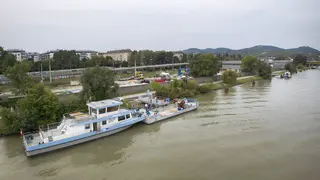The European transport infrastructure is the backbone of the common internal market and must continue to be developed in a harmonised manner: with cross-border projects, harmonised standards and sustainable competitiveness. viadonau supports the joint position paper of the most important Austrian infrastructure operators.
Together with the most important Austrian operators of rail, road, water and air transport routes as well as those of handling points and public transport, viadonau is calling for the preservation of the centrally managed Connecting Europe Facility (CEF). In view of the EU plans for the reorientation of the 2028-2034 Multiannual Financial Framework, the infrastructure operators state in a position paper that the previously successful funding programme should not be replaced by individual national plans. The trans-European transport infrastructure forms the backbone of the internal market and is crucial for trade and mobility within the EU and beyond.
To date, CEF has enabled important projects such as the Brenner Base Tunnel, the Koralm Tunnel and the expansion of the Karawanken Tunnel, as well as modernisation in the area of waterways and airports. On the waterways in particular, CEF co-financed projects such as FAIRway Danube II and COMEX² contributed to a comprehensive harmonised development on the entire Danube, but also, for example, to the improvement of flood protection in the ports.
These projects have shown how crucial EU-wide co-financing is for reducing cross-border bottlenecks and harmonising technical standards. Without CEF, there is a risk that fragmented national plans will weaken Europe-wide cohesion and competitiveness.
viadonau joins the infrastructure operators in appealing to the decision-makers within the EU to recognise the added value of CEF and ensure its continued existence in the new Multiannual Financial Framework. Only a centrally controlled, flexible approach can ensure the sustainable expansion of the trans-European transport network and thus the future of Europe.
Joint position paper of the Austrian infrastructure operators

